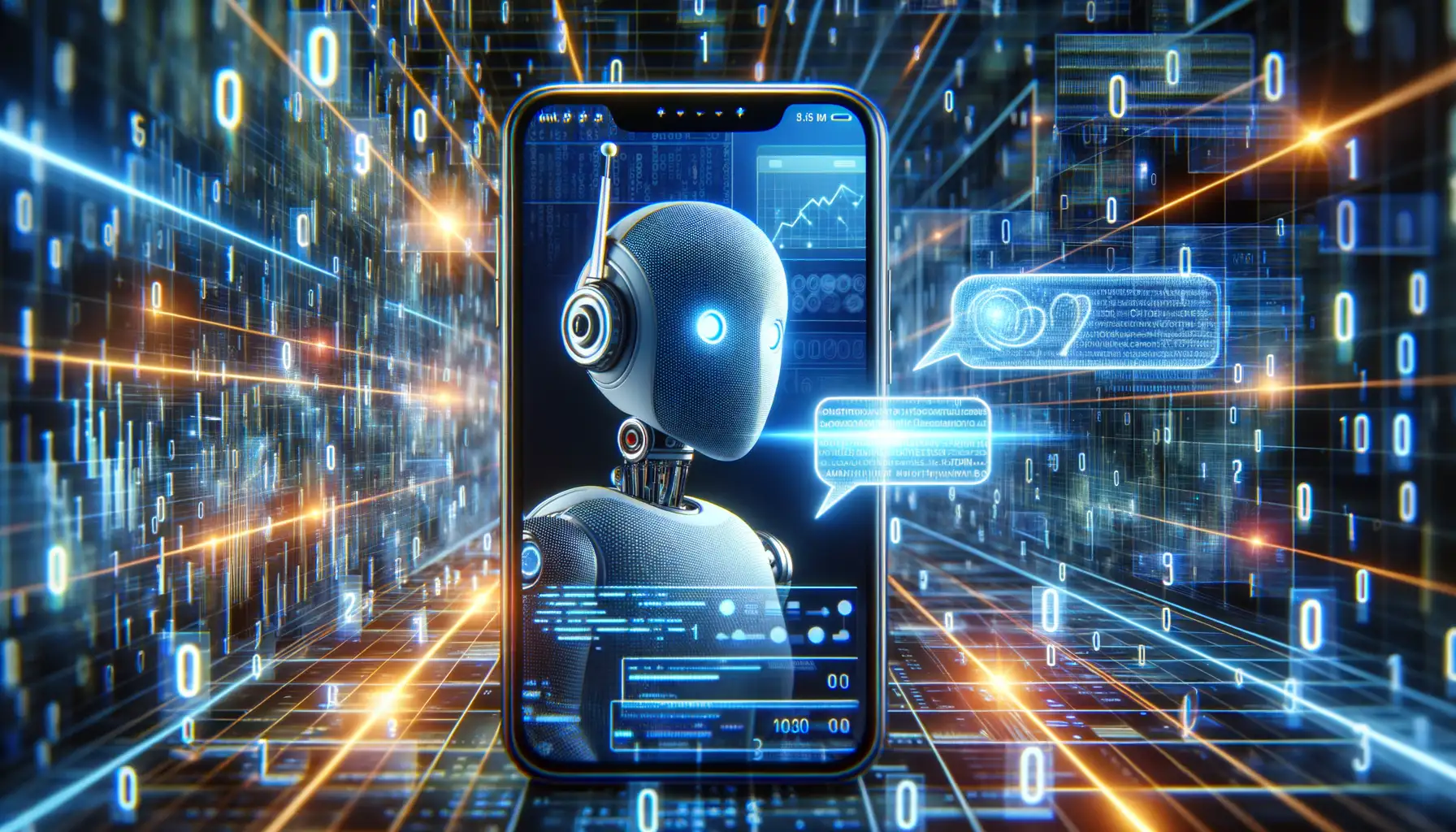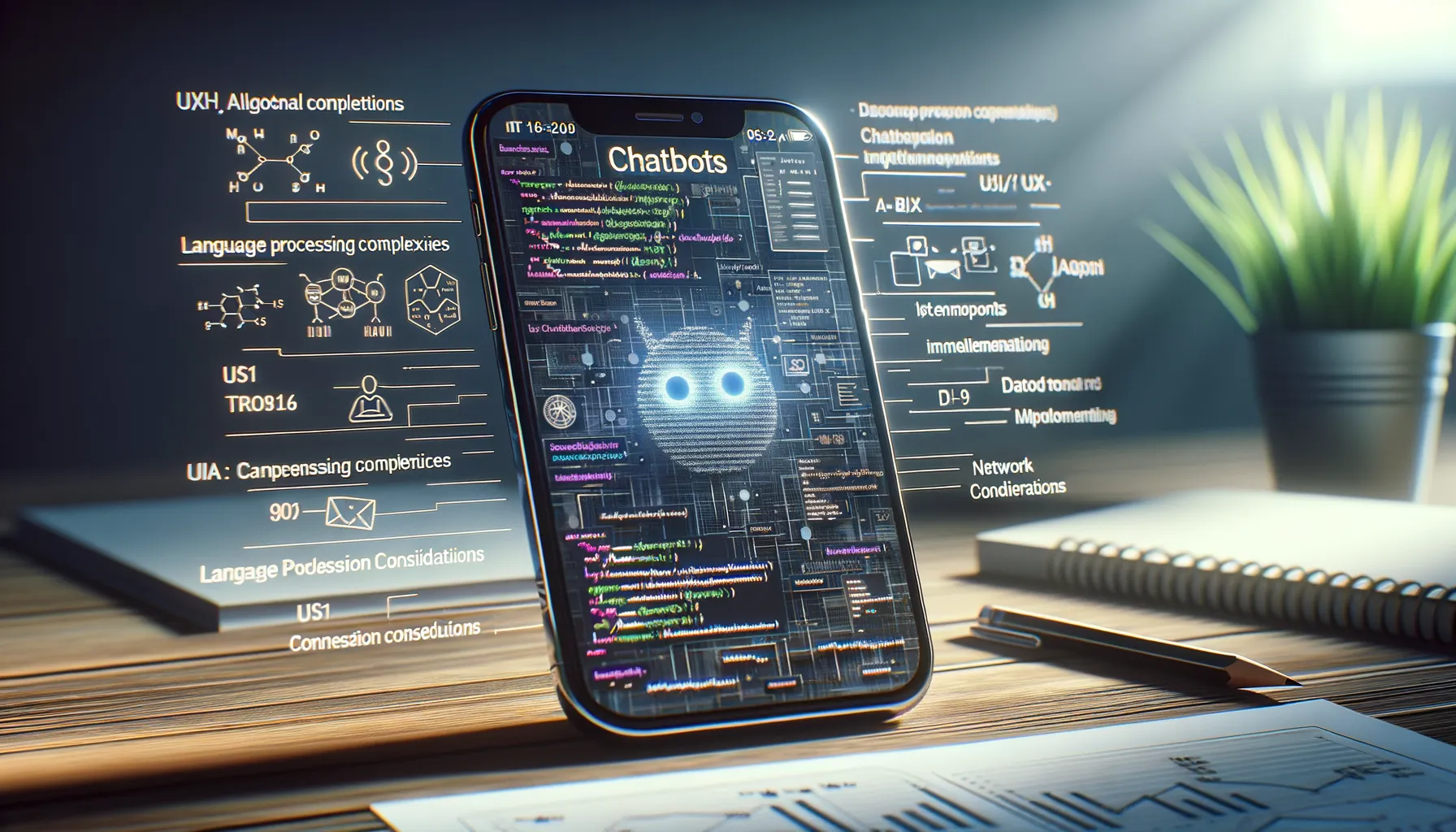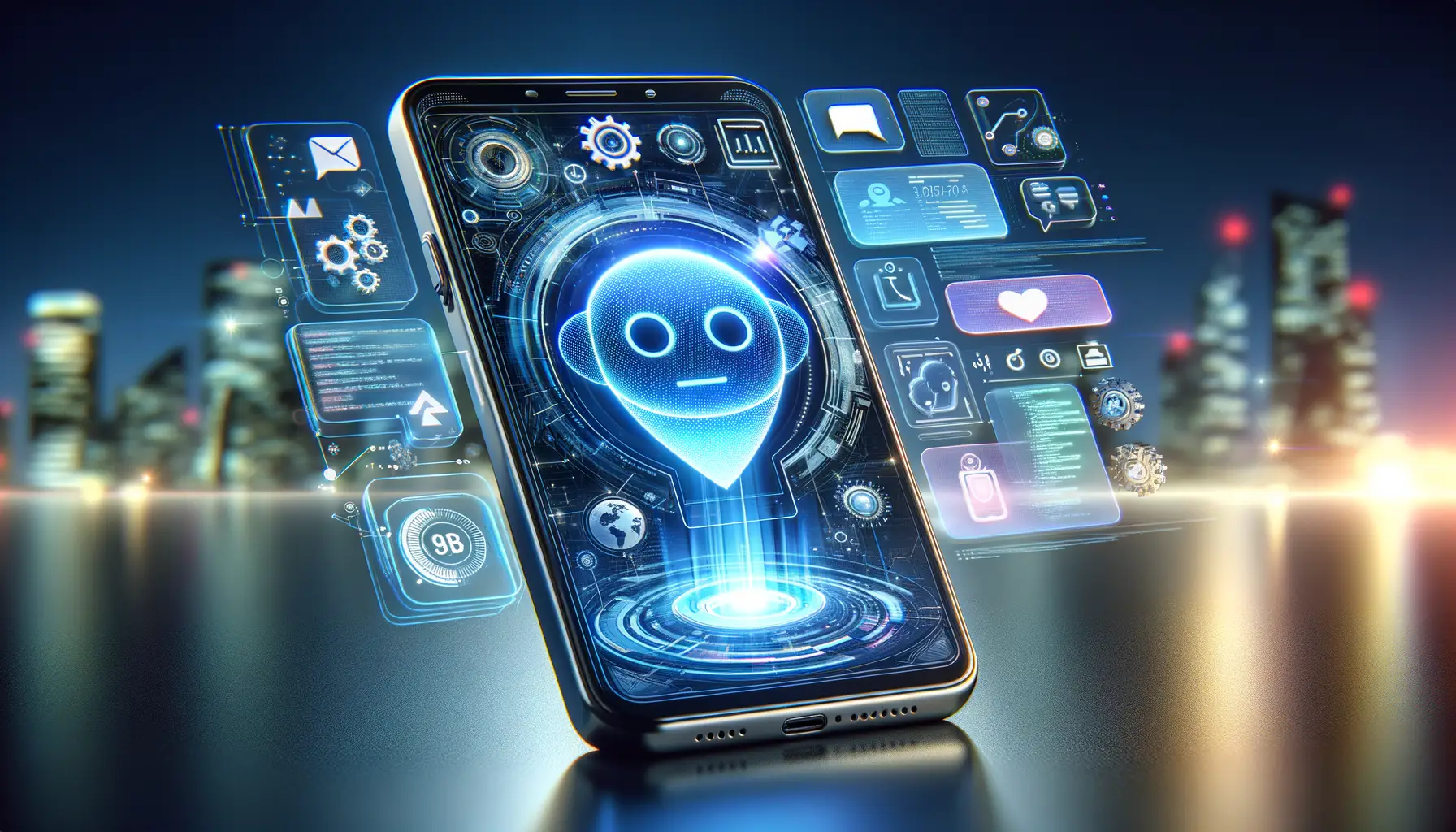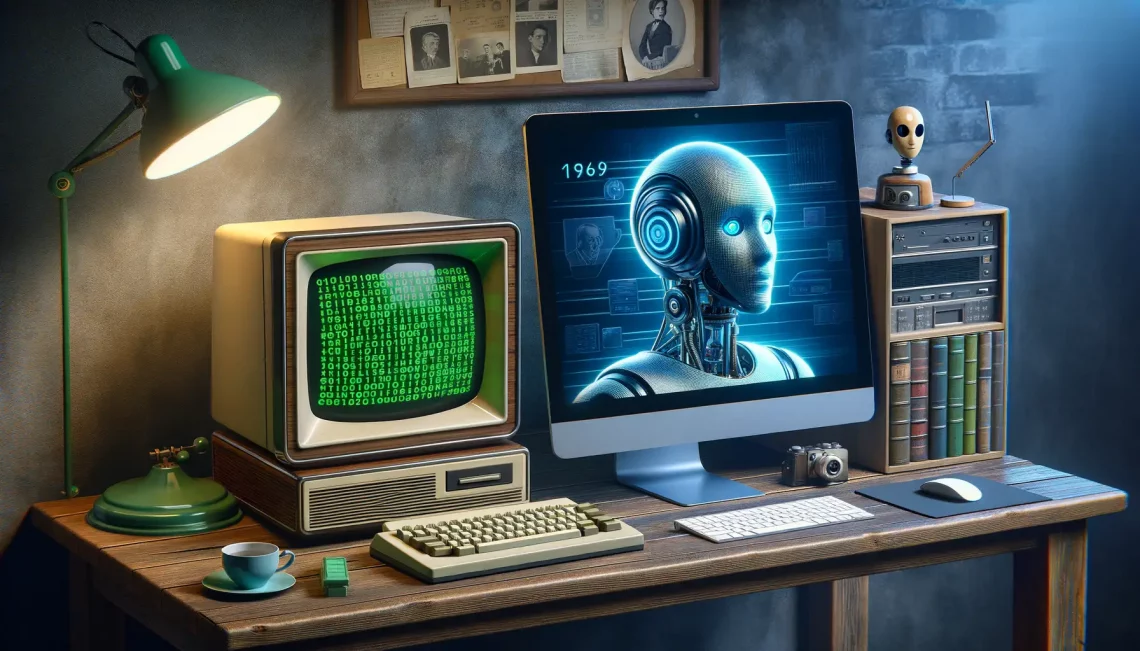Introduction to Chatbots and Their Role in Mobile Applications
Have you ever opened a mobile app and been greeted by a friendly, helpful assistant who seems to know exactly what you need? That’s no coincidence—it’s the magic of chatbots, seamlessly embedded into your favorite apps! These digital conversationalists are no longer just futuristic fantasies—they’re active, evolving, and reshaping how users interact with technology.
Why Are Chatbots Taking Over Mobile Apps?
Let’s face it, speed and efficiency rule. Whether solving a late-night customer service dilemma or helping you book that flight while juggling coffee, chatbots bring convenience to the table. They can:
- Answer questions faster than a human ever could.
- Handle tasks like booking appointments, shopping, or troubleshooting without making you wait.
- Even act as flat-out entertainers—tried out a joke-telling bot yet?
A dynamic chatbot feels like chatting with your tech-savvy best friend who just… happens to live inside your phone. But they’re not limited to practicality; their role is growing into creating memorable, even delightful user experiences.
A Revolution Fueled by AI
What makes modern chatbots so special is their use of Artificial Intelligence. Today, these little digital helpers understand your slang, mimic human emotion, and personalize communication. Picture yourself asking a food delivery app for “something spicy,” and voilà—a chatbot narrows down dishes as if it knows your palate better than you do!
From simple Q&A bots to highly intuitive virtual assistants, chatbots have become a core element in crafting mobile applications that feel truly alive and attentive. It’s not just tech; it’s a revolution in how we connect with our devices—and, honestly, it’s a future that’s already here.
Historical Development of Chatbot Technology

The Dawn of Chatbot Beginnings
The story of chatbot technology reads like a journey through time, ripe with innovation and creativity. It all began in 1966 with the development of ELIZA, a computer program designed to simulate a psychotherapist. ELIZA was not exactly Dr. Phil—it relied on simple pattern recognition rather than true understanding—but it planted a crucial seed. Have you ever considered how astonishing it is that something so basic cracked open the door to conversational AI?
Then came the 1970s and 80s, where chatbots like PARRY, inspired by ELIZA, were used to simulate the thoughts of a paranoid individual. Fast-forward to the ‘90s, when A.L.I.C.E (Artificial Linguistic Internet Computer Entity) entered the scene, dazzling with more sophisticated natural language processing, though still far from perfect.
- 1966: ELIZA – The pioneer chatbot engaging in text-based conversations.
- 2001: SmarterChild – A playful bot popular on AIM & MSN Messenger.
A New Chapter with Machine Learning
Everything changed in the 2010s as chatbots entered the era of machine learning. The introduction of frameworks like Google’s TensorFlow and open APIs allowed developers to breathe life into increasingly smarter bots. And let’s not forget the explosion of virtual assistants—Siri, Alexa, and Google Assistant—that turned our smartphones into conversational companions. Isn’t it surreal how we went from ELIZA’s scripted responses to bots that can help manage your grocery list?
Current Trends and Innovations in Mobile Chatbot Applications

Revolutionary Features Shaping Mobile Chatbots
If you think mobile chatbots were impressive a few years ago, prepare to have your mind blown. Today’s mobile bots are no longer just question-answering machines—they’re evolving into full-fledged digital companions with dazzling new capabilities. For starters, we’re seeing chatbots powered by advanced AI-driven personalization. Imagine a travel app where the bot remembers your last booking, suggests destinations based on your taste, and even checks the weather for you in real time. It’s like having your own virtual assistant who actually gets you.
Another game-changer? The rise of voice-enabled bots. Thanks to innovations in natural language processing (NLP), these bots don’t just understand your words—they catch nuances, accents, even hesitation in your voice. Talk about emotional IQ! And let’s not skip over their newfound creativity: some chatbots are dabbling in generating poems, ad campaigns, or quirky memes for users.
- Multilingual mastery: Advanced bots are now fluent in multiple languages, making them global-ready.
- Visual recognition: Upload a photo, and the chatbot suggests products, recipes, or even diagnoses a plant disease!
Integration with Cutting-Edge Tech
The chatbot universe is buzzing with excitement as they sync with the latest technologies. Augmented reality (AR) is becoming their playground. Picture a home décor app with a chatbot that doesn’t just recommend furniture but uses AR to “place” it in your living room through your phone’s camera. Goosebumps-worthy, right?
And then there’s blockchain-backed bots, ensuring super-secure transactions when chatting about payments or sensitive data. Combine this with their ever-growing smart home compatibility—managing your thermostat, lights, and even groceries through a friendly bot feels like living in the future.
This isn’t just evolution; it’s a revolution. Mobile chatbots are stretching their limits, breaking barriers, and making our apps smarter, more intuitive, and occasionally, downright magical.
Challenges in Implementing Chatbots in Mobile Platforms

Cracking the Code: Why Mobile Chatbots Can Be a Headache
It’s no walk in the park to bring chatbots into mobile apps. Sure, they look sleek and savvy on the surface, but behind the curtain? It’s a whirlwind of challenges that could make even the most seasoned developer break a sweat. One big stumbling block? Language understanding. Let’s face it—users are unpredictable. They might text with emojis, typos, or slang that makes Shakespeare roll in his grave. Teaching a chatbot to handle casual phrases like “sup?” or “lemme know” is no easy feat.
There’s also the elephant in the room: device limitations. Mobile platforms are tight on space and resources, and adding a chatbot can feel like trying to squeeze a couch into a tiny studio apartment.
- Battery life takes a hit when AI systems run in real-time.
- Some older devices can barely keep up with complex chatbot frameworks.
And oh, did I mention privacy concerns? When users type sensitive info, they’re not imagining their words being routed across servers like some digital relay race. Encrypting that data while keeping the conversation speedy? It’s like balancing on a wire over a canyon!
Future Outlook and Potential of Chatbots in Mobile Apps

Revolutionizing Mobile App Personalization
The future of chatbots in mobile apps is not just about answering questions or automating tasks—it’s about crafting deeply personalized, almost human-like interactions. Imagine opening a fitness app where a chatbot doesn’t just suggest workouts but *knows* your energy levels, cheerfully reminds you of past successes, and tailors your routine as if it were your personal trainer. That’s not sci-fi—it’s the direction we’re heading toward.
With advancements in AI and natural language processing, future chatbots will make mobile apps feel like they’ve been custom-built for you. They’ll predict what you want before you even ask. Thinking of ordering food? Your chatbot might say, “Feeling like sushi today? Your usual place has a 20-minute delivery time.” It’s almost like having a mind-reading assistant tucked into your pocket.
- Hyper-personalization: Chatbots will adapt to individual habits and preferences, creating completely unique app experiences.
- Voice and emotion detection: They’ll “listen” beyond words, analyzing tone to respond with empathy or excitement.
The possibilities are boundless—chatbots are becoming more than tools; they’re companions, making mobile apps essential parts of life.
A Gateway to the Internet of Things (IoT)
Picture this: you open your smart home app, and the chatbot inside orchestrates every device seamlessly. Your thermostat is adjusted before you step through the door, your coffee machine whirs to life as you wake, and all of this happens because your chatbot communicated with every piece of tech in your home. Fascinating, right?
The future promises tighter integration between chatbots and the Internet of Things. Mobile apps will no longer just be standalone platforms—they’ll act as control centers for connected ecosystems. A chatbot-equipped app could manage your calendar, car, fridge, and wearable devices all at once.
This isn’t just about convenience; it’s about creating harmony in chaotic modern lives. Chatbots in apps are evolving from assistants to orchestrators, turning fragmented technologies into seamless symphonies. And trust me, we’re only scratching the surface of their potential.






